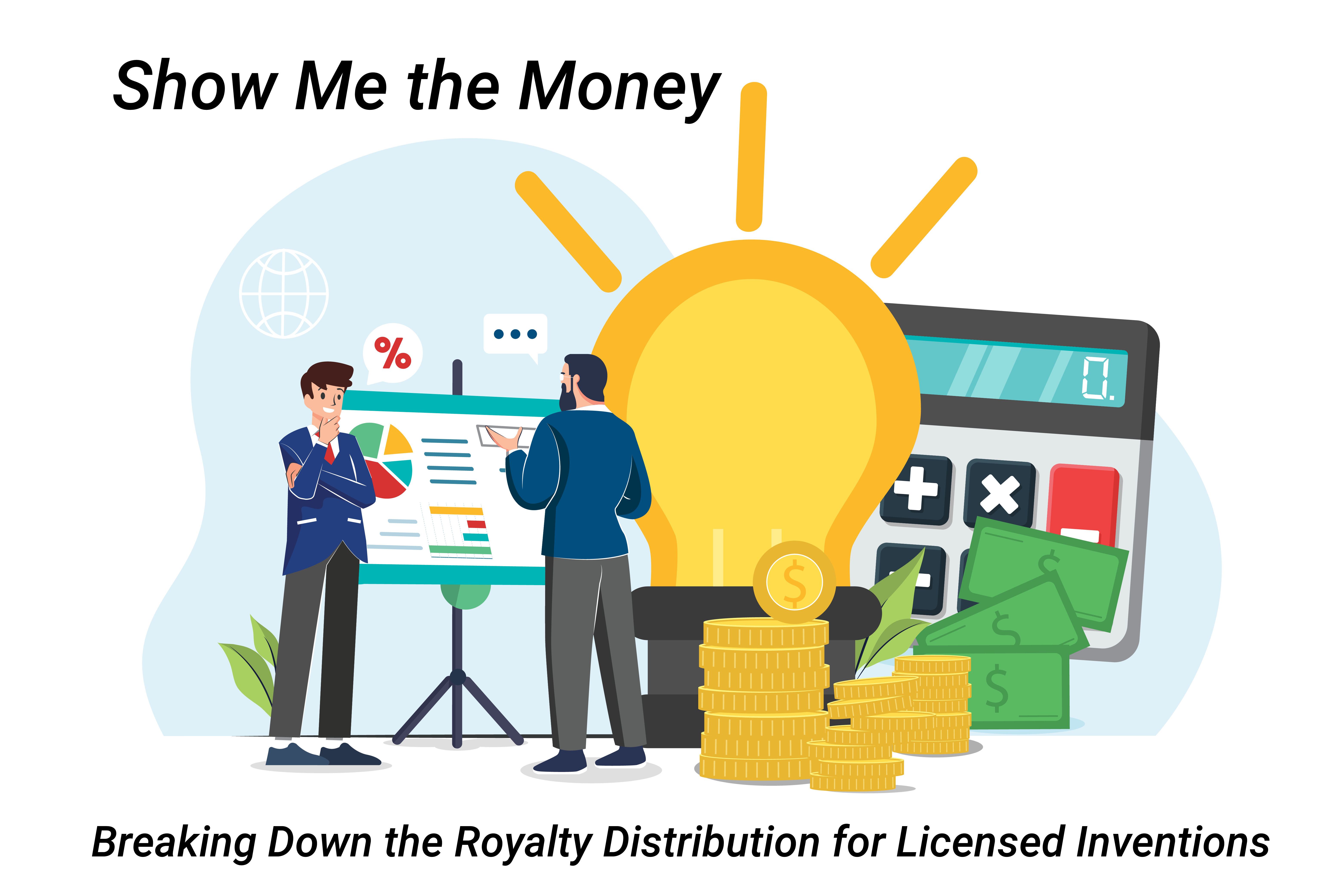Show Me the Money

Breaking Down the Royalty Distribution for Licensed Inventions
by Mitch Dozier, Director of Operations & Finance, OTC
So, your novel idea is a success–congratulations! Now that the agreement is generating or will generate revenue, you’re wondering how does it get divvied up?
The Office of Licensing & Ventures (OTC) is responsible for managing the expenses and revenues associated with technology agreements. Revenues from license fees, royalties, and equity—minus any unreimbursed patenting and commercialization expenses—are then shared with inventors, per the University’s Policy on Patents, Inventions and Technology Transfer.
This policy provides for the sharing of income received from commercialization efforts with the inventors. It also accounts for the distribution of a portion of the income among the inventors’ laboratories and affiliated departments and schools. The details of ‘how much goes where’ is captured for each agreement in a Revenue Distribution Plan (RDP).
The Revenue Distribution Plan
The RDP is used to document relative percentages intended to estimate each inventor’s contributions to the intellectual property (IP) being optioned or licensed to an outside company, ideally as recognized by the inventors themselves. OTC works with the inventors to draft the RDP, usually shortly after an agreement is first executed, with the intent to create discussion among the inventors until an agreed-upon percentage for each inventor is settled.
Calculating the Inventor’s Share
In the beginning, when an inventor or group of inventors feels their idea has commercialization potential, they fill in an Invention Disclosure Form (IDF) with OTC. The IDF requests that inventors agree upon “contribution percentages” at the time of submission.
If your new license agreement relates to a single invention disclosure, then the draft RDP will simply use the contribution percentages stated in the IDF. However, if the license agreement relates to multiple invention disclosures (a more common event), or an inventor is listed on more than one patent relating to the invention, OTC will create a composite set of contribution percentages as the basis for the draft RDP.
For example:
A license agreement with two patents:
–one naming only inventor A (100%)
–the other naming Inventors A, B, C and D with equal (25%) contributions
The draft RDP would show inventor A to receive 62.5% of the inventors’ share:
(100%+25%)/2, or 62.5%
The lab, department, and school shares are based on the final inventor share percentages.
In the cases of inventions that will likely not be protected by patents (research tools, copyrightable materials such as software and content), it is important at the IDF stage to list only those inventors/ authors who were involved in the actual development and creation of the invention or directly influenced the development and creation of the invention. It is important to understand that not all participants in a project are authors.
Gaining Consensus
Inventors often agree upon the draft RDP as the final approved RDP, but this is not always the case. However, once consensus has been reached, the laboratory, department, and school shares will be distributed proportionally based on the RDP inventor percentages.
If the inventors are unable to agree on an approved RDP after a reasonable period of time OTC’s Executive Director will set the RDP.
Revisions and Appeals
The approved RDP will only be revised if certain criteria are met. Inventors should alert OTC if they believe any of these criteria has arisen.
Inventors may appeal final revenue distribution decisions to the OTC Board defined under Section IIC of the Policy within 30 days after any decision is communicated via e-mail by OTC.
Payment, Report, and Taxes
Revenue distributions to Non-Duke Employee US Citizens, Permanent Residents, or Resident Aliens are paid via check mailed from the University Accounts Payable office to the inventor’s home address. Inventors who are no longer at Duke must keep OTC apprised of their contact information. Current employees will receive their revenue distribution payments by direct deposit via Employee Travel & Reimbursement
License revenues are typically reported on Form 1099. You should consult an advisor for specific tax advice.
Learn more about the revenue distribution process